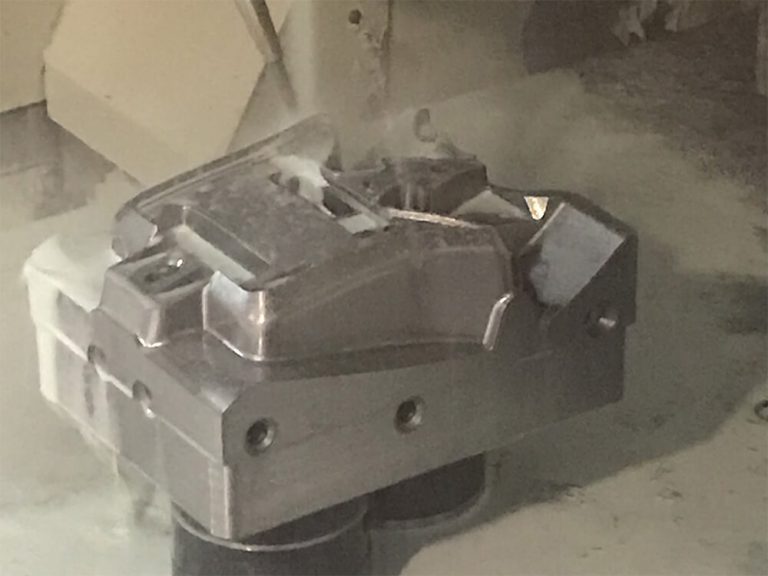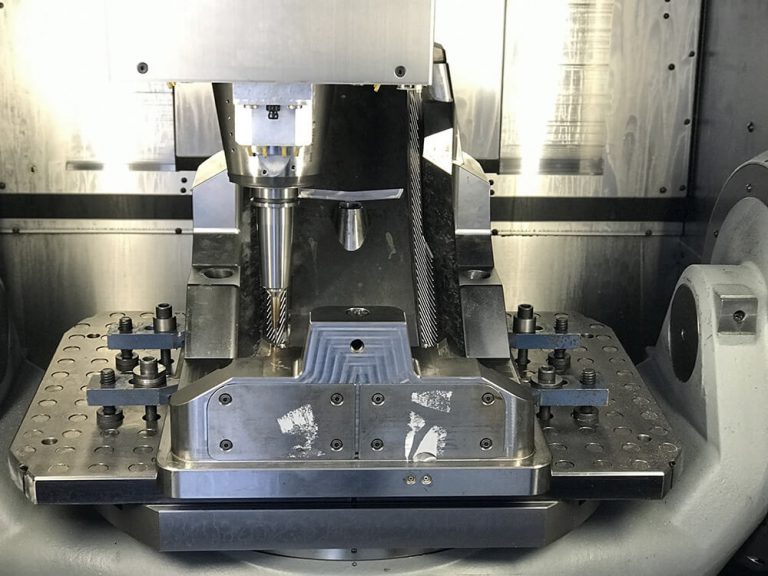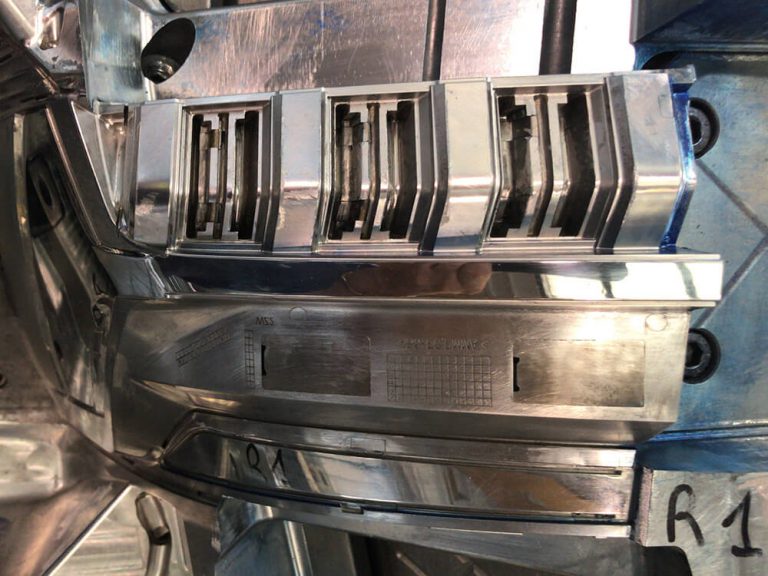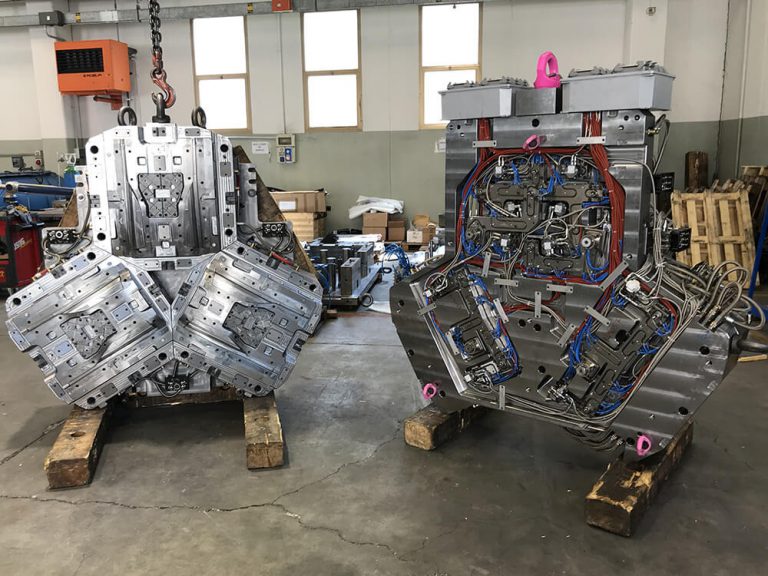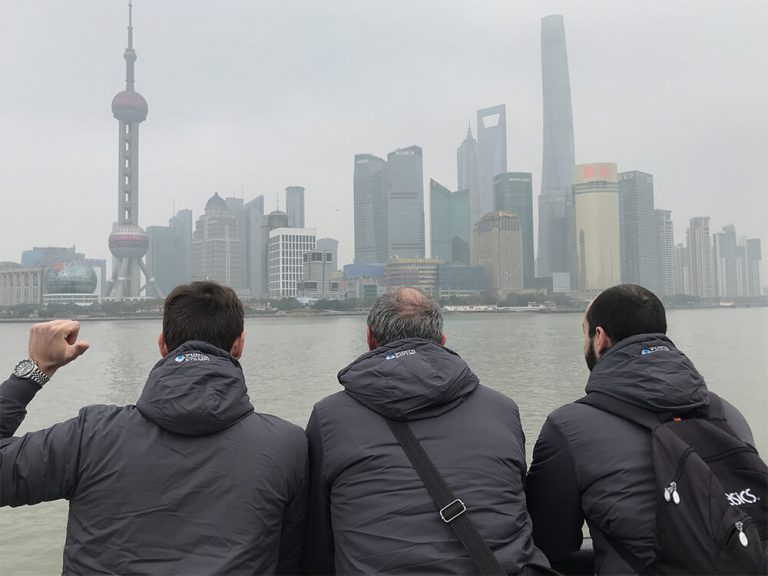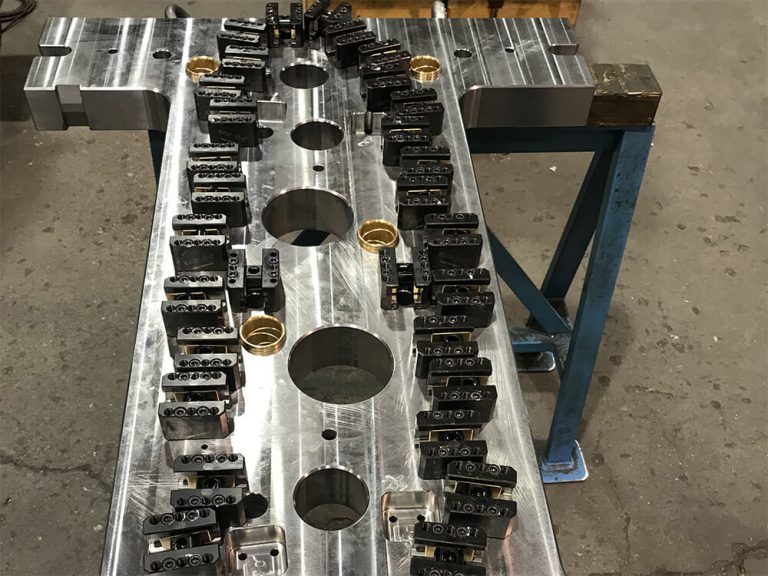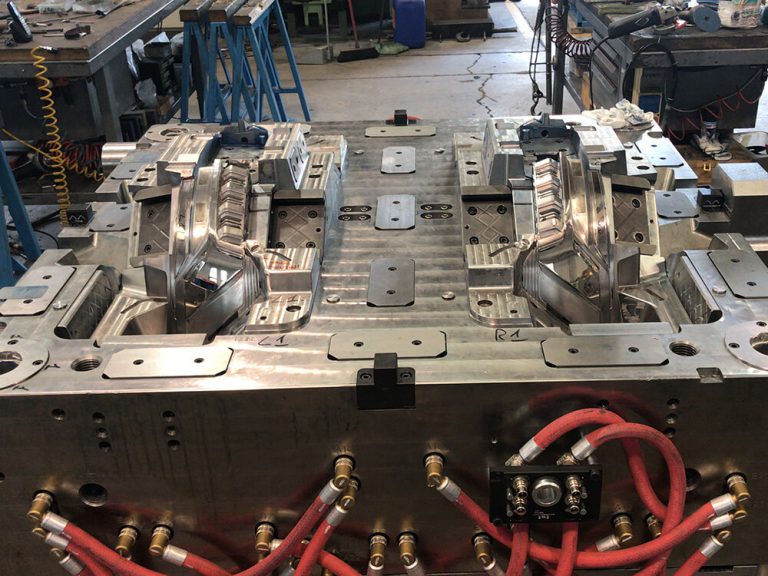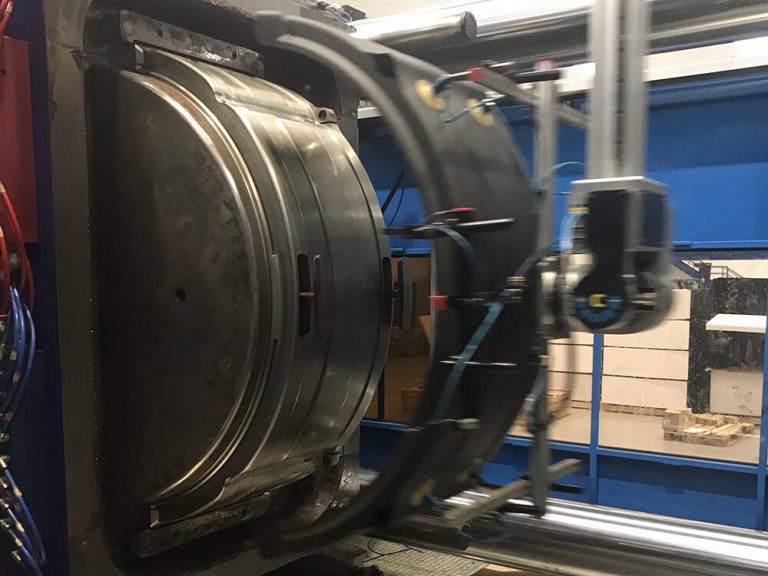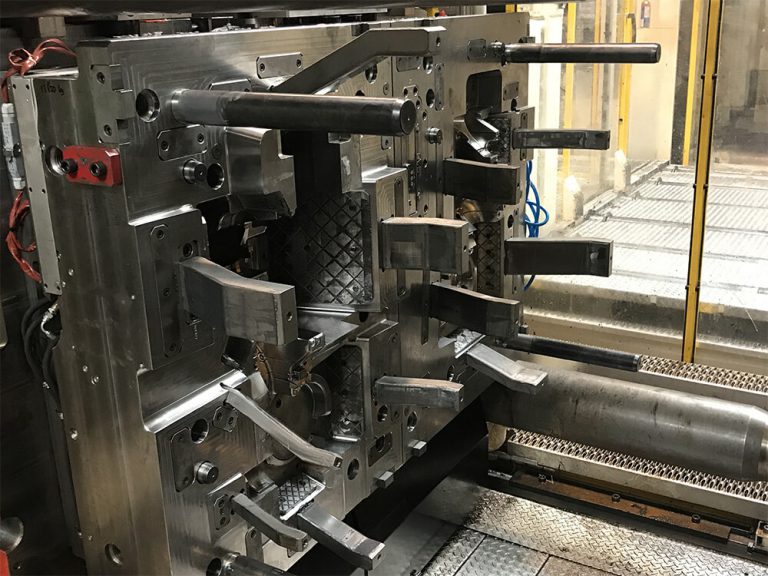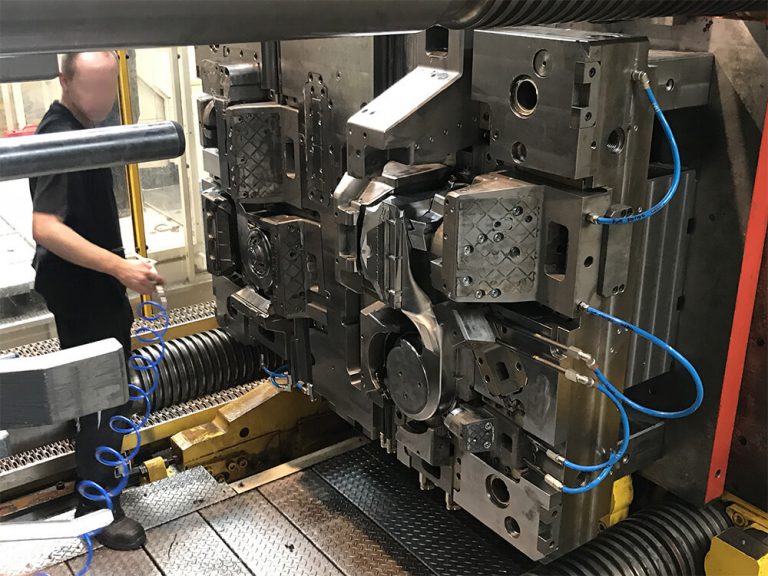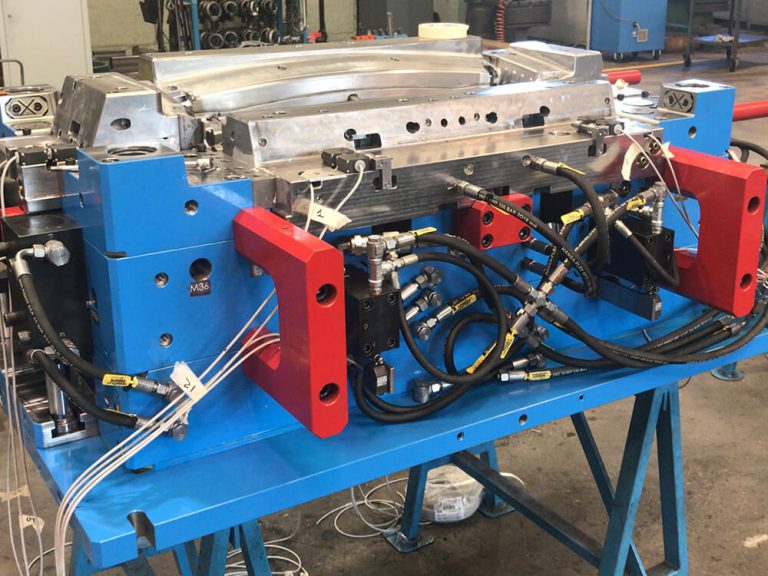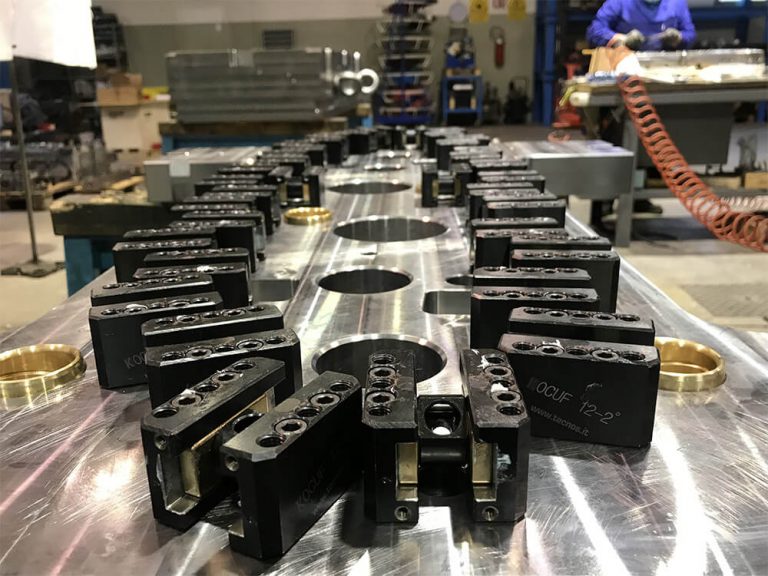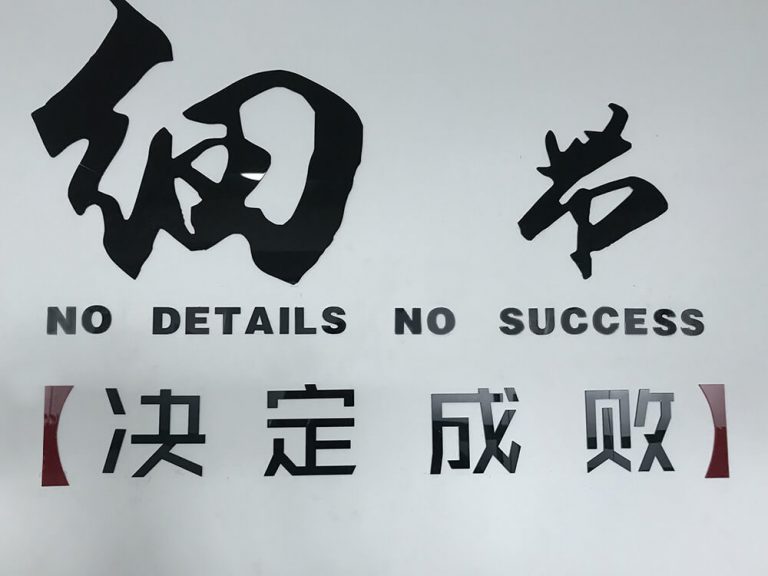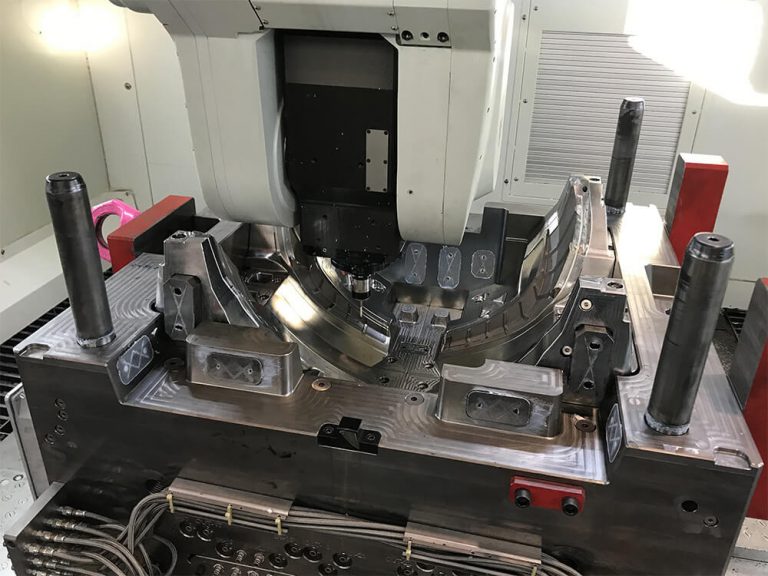Moulds for molding of plastic materials and light alloys
We manufacture moulds for the injection molding of plastic materials, for the die-casting of aluminum, zamak and magnesium alloys. We can produce moulds from 100 to 2000 tons of clamping force.
We have gained experience in the automotive, household and electronics, furniture, leisure and design sectors.
We produce Moulds for the production of single, bi and tri material aesthetic parts, rotary moulds, with blades retraction or by means of the piece transfer by robots.
Automotive
Front and rear (bodies, lenses, reflectors, regulations).
Plastic
Air conveyors, intake ducts, control unit covers.
Aluminum
Engine support, cylinder head covers, gears, oil filter caps, engine parts, steering guide sleeves, power train , cabin air conditioning boxes , buttons , light guide, seat backs, aesthetic control shells, door panels, skeleton, 4E walls.
Complete exterior rear mirrors.
Wheel arch moldings, exterior car aesthetic molding, roof moldings, rear bunner for licence plate support, brand holder chromed moldings, front masks, calenders, door pillar covers, drains covers, tank caps, air intakes.
Tool containers, tool boxes, fire extinguishers holder, fenders.
Door closing systems, supports for accessories, locks.
Power Tools / Household Appliances
Screwdrivers, drill bodies, demolition bodies.
Components for control systems in the food industry.
Water presence detectors, components of laboratory testing machines.
Elements for diagnostic photographic systems.
Components for dishwashers, lamps, components in contact with food, conservation systems.
Moulds design and construction
Design is the most important phase of the production process. We always use updated state-of-the-art 3D software. Each mould is discussed and analyzed by the design team in order to identify the most suitable solutions.
Feasibility aims to obtain the requested piece with the best possible dimensional and aesthetic characteristics. We perform: analysis of draft models and / or preliminary customer study, verification of mouldabilitv to check if it is possible to carry out movements, divisions, injection, extraction and cooling.
Moulds with complex movements
Carriages, lifters, movements in the movements, direct or indirect movements on the mobile side and on the fixed side, extraction on the injection side.
Unscrewimg systems
Hydraulic unscrewing, with electric motors, when opening the mold.
Unscrewing pins in the fixed tool side, mobile tool side and movements.
Warm chambers with and without valve gate
Various plastic injection systems are regularly used such as hot runners with free-flowing, valve gate, capillary nozzles cascade with and without sequential openings.
Multi-component moulds with blade technology
Injection of two different components without intermediate opening of the mould. The indirect movement of the blades starts by means of hydraulic cylinders that move them directly or indirectly. Widely used for engine compartment air ducts, sleeves and pipes for fluids but also for aesthetic pieces such as lids, aesthetic boxes for fire extinguishers, etc.
Rotary moulds with 2-3-4- colors with two or three stations
These molds are used above all for the production of aesthetic details on the first surface. In the automotive sector they are commonly used in the lighting sector for the production of aesthetic lenses and frames. In furnishings they are used for high-level furnishing components such as chairs and lamps.
We use all available Technologies with the most advanced programs to perform filling analysis, flow analysis, air trap, deformation and FEM analysis, where required.
- Moulds design is carried out by using: Unigraphics Vers.18.
- We can process files with extensions: STEP, IGES, CAT.part, CAT.drw, Solidwork, Parasolid
- Cavity filling simulation is made by: Moldflow, Magmasoft, ProCAST
- We use licenses for toolpaths CAM - WorkNC.
FEM Analysis
Using structural verification software, the operating conditions of the part under examination are simulated and therefore the loads it is subject to, including vibrations. The aim of the structural analysis is to verify the mechanical resistance of the part to mechanical and vibrational stresses, adjusting the sizing of the pieces according to the simulation results obtained.
Cavity filling simulation
The study of the simulated filling is a source of important information for the subsequent technical evaluations necessary to design and manufacture moulds capable of producing high-performance productions in terms of quality and production capacity.
The results of the filling simulation give important information such as flow junctions, air traps, areas with a high concentration of heat or difficult areas in terms of filling, pressures involved, etc.
This information allows technicians to foresee certain behaviors of the cavity but also of the production equipment / product and to adjust accordingly.
Sampling, testing and pre-series
We can sample moulds with presses with declared force from 100 to 1500 tons, technologically equipped to perform complete tests. We also carry out pre-series, zero series and what is necessary for a correct start of production. For each sampling it is possible to perform a test report and a 3D report, comparing the piece to be checked with the relative 2D drawing.
Mould engineering and development
We offer a complete service, from the mould development to its production. Control of the “value chain” is a key factor for Punto Stampi, enabling it to support its customers in development and engineering, even including following design activities for new articles and specification of the parameters needed to meet products feasibility and quality requirements.


